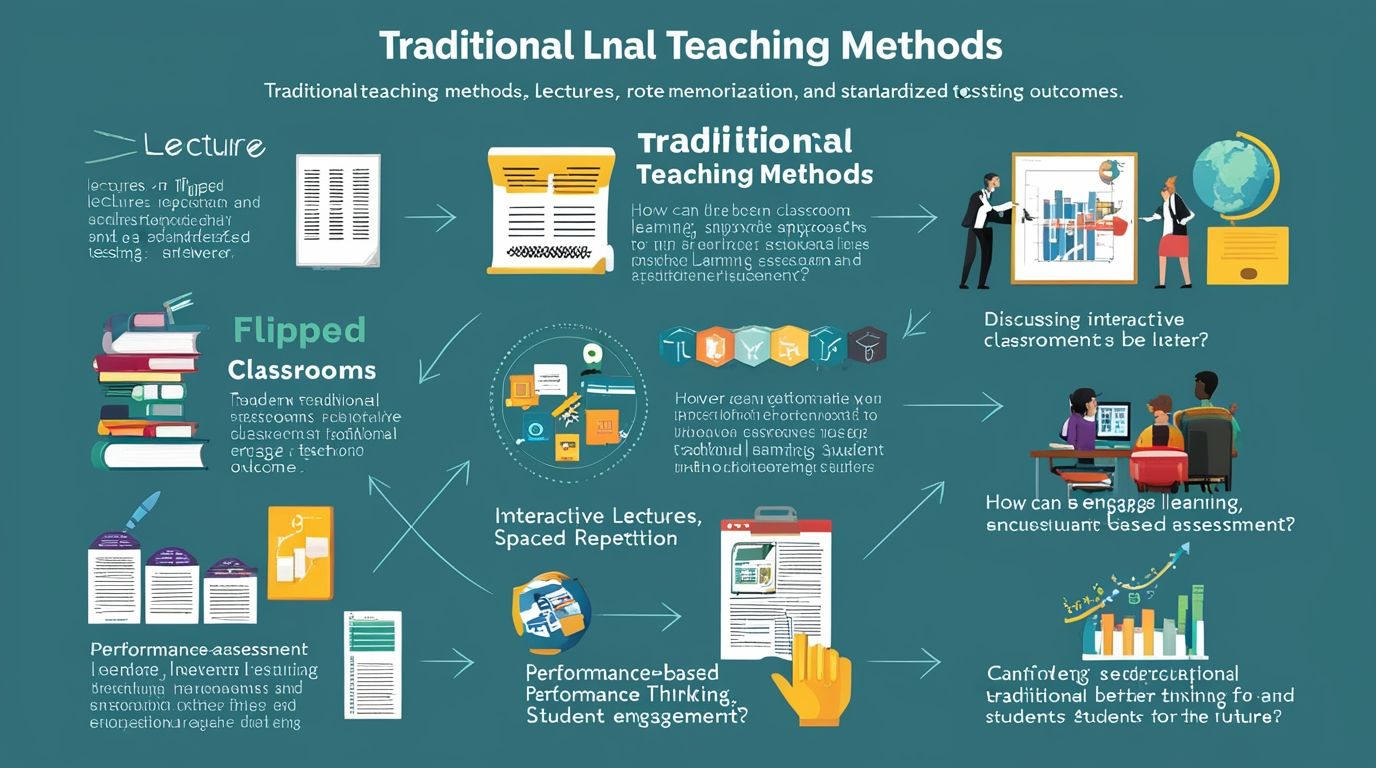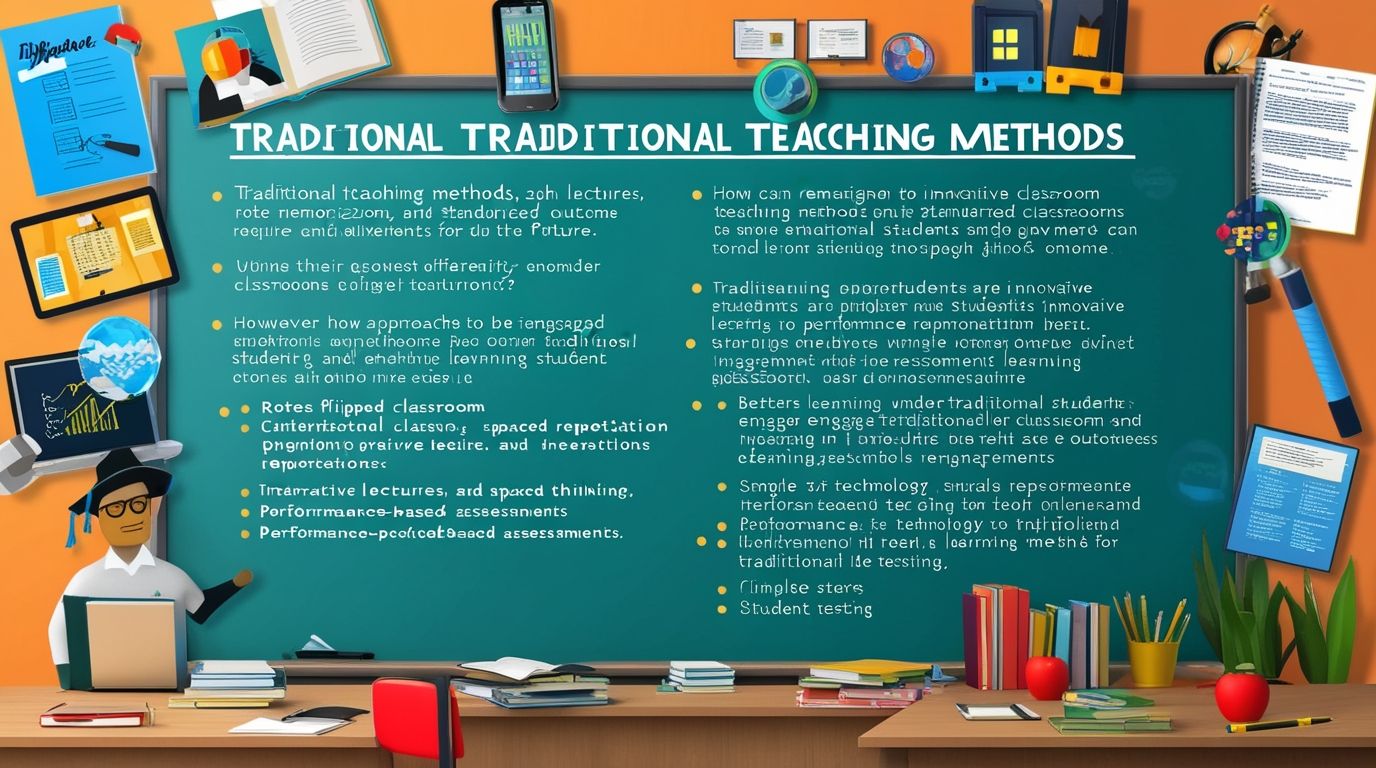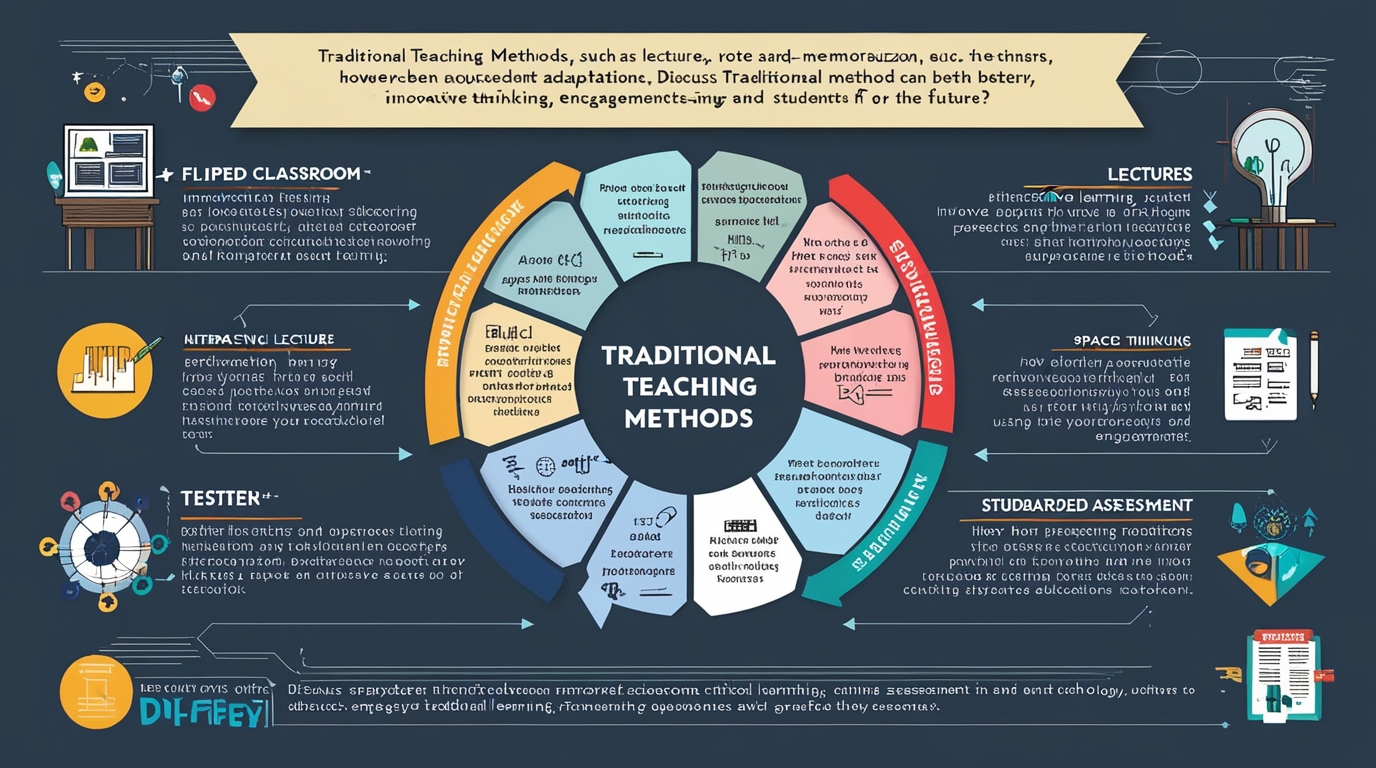Differently Using Traditional Teaching Methods have long been the backbone of educational systems worldwide. They include lectures, rote memorization, and standardized testing. While these methods have their merits, such as structure and efficiency, there is a growing need to adapt them to better meet the diverse needs of modern students. This article explores innovative ways to utilize traditional teaching methods to enhance learning outcomes and engage students more effectively.
The Evolution of Lectures
Lectures have been a staple in education for centuries, serving as a primary means of delivering information to students. However, the traditional lecture format often results in passive learning, where students merely receive information without actively engaging with the material. To address this, educators are reimagining the lecture format in several ways:

- Flipped Classrooms: In a flipped classroom, the traditional lecture is moved outside of class time. Students watch pre-recorded lectures or read material at home, allowing classroom time to be used for interactive activities such as discussions, problem-solving, and hands-on projects. This approach encourages active learning and ensures students come to class prepared to engage with the content.
- Interactive Lectures: Incorporating technology and interactive elements into lectures can make them more engaging. Tools such as audience response systems (clickers), live polls, and interactive presentations (e.g., using software like Nearpod or Mentimeter) allow students to participate actively during the lecture, fostering a more dynamic and engaging learning environment.
- Microlectures: Breaking down traditional lectures into shorter, more digestible segments—known as microlectures—can help maintain student attention and improve retention. These brief lectures, typically 5-10 minutes long, can be interspersed with interactive activities, discussions, or reflective exercises.
Enhancing Rote Memorization
Rote memorization is often criticized for encouraging surface-level learning rather than deep understanding. However, when used strategically, it can be a valuable tool for building foundational knowledge. Here are some innovative approaches to enhance rote memorization:
- Mnemonics and Memory Aids: Utilizing mnemonics, acronyms, and other memory aids can make rote memorization more effective and enjoyable. These tools help students create associations that make it easier to recall information.
- Spaced Repetition: Spaced repetition is a technique that involves reviewing material at increasing intervals over time. This method leverages the psychological spacing effect, which suggests that information is more easily remembered if it is studied a few times over a long period rather than cramming. Tools like Anki and Quizlet can help implement spaced repetition effectively.
- Contextual Learning: Embedding memorization tasks within meaningful contexts can improve retention. For example, learning vocabulary words through stories or practical scenarios makes the information more relevant and easier to recall.
Rethinking Standardized Testing
Standardized testing has been a cornerstone of education, providing a uniform measure of student achievement. However, it often emphasizes rote memorization and fails to assess higher-order thinking skills. Here are some ways to rethink and enhance standardized testing:
- Formative Assessments: Incorporating more formative assessments—ongoing assessments that provide feedback during the learning process—can help students identify their strengths and areas for improvement. These assessments, which can include quizzes, peer reviews, and self-assessments, allow for timely feedback and adjustments to teaching strategies.
- Performance-Based Assessments: Shifting from traditional multiple-choice tests to performance-based assessments can provide a more comprehensive evaluation of student learning. Performance-based assessments require students to apply their knowledge to real-world scenarios, demonstrating their understanding through projects, presentations, and portfolios.
- Collaborative Testing: Allowing students to work together during tests can encourage deeper understanding and critical thinking. Collaborative testing can involve group problem-solving tasks, discussions, and peer feedback, promoting a more holistic approach to assessment.

Integrating Technology
Technology can play a significant role in reimagining traditional teaching methods. Here are some ways technology can enhance traditional approaches:
- Blended Learning: Blended learning combines traditional face-to-face instruction with online learning. This approach allows for greater flexibility and personalized learning, catering to different learning styles and paces.
- Gamification: Incorporating game elements into traditional teaching methods can make learning more engaging and motivating. Gamification can include elements such as points, badges, leaderboards, and game-based learning activities, encouraging students to participate actively and enjoy the learning process.
- Digital Resources: Utilizing digital resources such as e-books, online simulations, and interactive tutorials can enhance traditional teaching methods. These resources provide students with additional opportunities to explore and engage with the material.
Conclusion
While traditional teaching methods have proven effective over the years, adapting them to meet the needs of modern students is crucial. By reimagining lectures, enhancing rote memorization, rethinking standardized testing, and integrating technology, educators can create more dynamic and engaging learning environments. These innovative approaches not only improve learning outcomes but also prepare students for the complex and ever-changing world they will encounter beyond the classroom.

It is in point of fact a nice and useful piece of info. I am happy that you just shared this useful info with us. Please stay us up to date like this. Thank you for sharing.
rfeagd
Slot Gacor : Situs Slot Online Gacor yang Menjanjikan Kemenangan Besar
Do you have a spam problem on this site; I also am a blogger, and I was curious about your situation; many of us have developed some nice procedures and we are looking to exchange solutions with others, be sure to shoot me an e-mail if interested.
I’m typically to running a blog and i actually admire your content. The article has actually peaks my interest. I am going to bookmark your website and preserve checking for brand spanking new information.
Thank you for the auspicious writeup. It in fact was a amusement account it. Look advanced to more added agreeable from you! By the way, how could we communicate?
Virtually all of the things you point out is supprisingly legitimate and it makes me ponder the reason why I hadn’t looked at this with this light before. Your article truly did switch the light on for me personally as far as this issue goes. However there is actually just one point I am not too comfortable with and while I make an effort to reconcile that with the main theme of your issue, allow me observe what all the rest of the readers have to point out.Well done.
Precisely what I was searching for, thankyou for posting.
I reckon something truly interesting about your site so I saved to bookmarks.
Hi there, simply changed into alert to your blog through Google, and located that it is really informative. I’m going to be careful for brussels. I will be grateful for those who proceed this in future. A lot of other folks might be benefited out of your writing. Cheers!
Some genuinely nice stuff on this website , I love it.
Bạn có thể đặt lịch chơi tự động tại game xn88 – ví dụ: mỗi tối 8h, hệ thống nhắc bạn vào chơi slot yêu thích – tạo thói quen giải trí lành mạnh. TONY01-06S